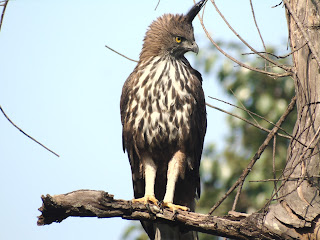Online Marketing is the utilization of all platforms to promote brands and create a reputation through website/blogs and unique content. While many Digital marketers offer services as SEO experts in the topic there is one difference between just experts and those very familiar with an allied field.
 |
| Lodge Courtyard House Kanha National Park |
Understanding Diverse Topics
Marketing becomes a potential weapon for traffic generation and brand promotion if an SEO has an understanding of diverse topics. I have!
Well, this comes about with long-term involvement with search engine optimization and social media marketing. Specialization in some fields accrues due to deep involvement in the subject on the ground as well. The added advantage of involvement in SEO is obvious. Hence I can provide a cohesive effort to promote the lodge website and tour operator website.
I have been associated with Indian Wildlife for many years as a freelance naturalist. I have accrued knowledge of lodge operations and management naturally after freelancing for more than ten years. I am well aware of customer behavior, needs, and expectations from lodge owners and tour management. Well, this means I am perfectly geared up for providing online marketing services to the wildlife sector. I create my own content.
Get Bookings!
 |
| Indian Wildlife |
Exciting Safaris with Naturalist Interpretation & Heavenly Lodge Experience spells success! There are a few aspects of wildlife experience in India:
Focus on Tiger or Apex Animal
Quality Birding
Destination Experience
In-depth Interpretation at Lodges
 |
| Tiger |
With Lodge Owners and Tour Operators, the need is to get bookings and recommendations that increase referrals. This happens whence you have a reputation online.
Hence a cohesive approach using integrated marketing is essential. Using various platforms a cohesive strategy can be chalked out using well-written content as the main tool.
Lodge/Tour Operators Website
In online promotions (mobile friendly) websites play a major role now...unlike earlier. Good link architecture, solid contents, and attributes with aesthetic design. But this is not all developing a good website with an appealing design is not enough for conversions.
Interactive Approach
You need to converse with the visitors and be contemporary. The former can be done using a chat window or an email but this will not be enough. You need to publish the latest happenings on the website. So create an interactive window to publish the latest tours along with photos and safari experiences as they were executed on weekly basis. All this has to be real-time besides the testimonial page. If you do this you will rid of being a static or cardboard cutout website which discourages conversions.
Integration of a blog is an ideal tool to converse with online visitors by highlighting recent tours and safari experiences.
Accreditations
It is important to register your company with a known association or Government if possible. These and other accreditation will increase your conversions tremendously.
Social Media
Being Active on Social Media and creating a reputation is also a prerequisite. SM can provide with immense reach and enhance conversions and inquiry levels.
Advertisement
If you have the resources to enroll in PPC like Google Adwords with a fixed budget for greater exposure.
If you have a good database highlight your activities and new introductions using Email Marketing. Or keep in touch with past clients as well for future business and convincing referrals...
Online Marketing requires constant involvement and resource planning. The best is to hire an Online Marketing Service/Content Writer and Quality Web Designer.
Are You Serious About Your Business?
Survival would be difficult without an online presence.
=======================================
===============================================
Uday works as a freelance naturalist/birder in India. He also provides SEO (Online Marketing Services) and Website Content.
Contact: pateluday90@hotmail.com
Mobile: 9755089323







































